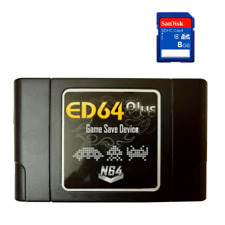Posted By: wraggster
Professor Layton sips tea from fine china and has a keen interest in archaeology. He enjoys fencing, displays a natural talent for puzzle solving, keeps a studious yet approachable demeanour (Layton became a professor at the age of 27) and wears a top hat that outlines a nobly Victorian silhouette. He is, in summary, a blend of kindly clichés drawn from literature, Hollywood and echoes of bygone eras. He's a hopeful tourist's idea of an Englishman. And yet, over the course of the six video games in which he stars, Professor Layton has revealed himself to be a great deal more than the sum of his well-worn, if well-meaning, clichés.Partly it's in the backstory, revealed in drips across the intertwining storylines of the games, in which the Professor and his 12-year-old public schoolboy sidekick Luke attempt to unpick a number of tangled mysteries. Here we learn that Layton's life was shaped by tragedy. Born Theodore Bronev, Layton and his elder brother were orphaned at a young age. His adoptive parents could only take on one of the two siblings. Before meeting the children they picked 'Hershel', Layton's older brother, on the adoption form. Hershel, wanting to look out for his younger brother, switched their names and gave Layton his place.Later in life, the professor's partner Claire, whom he first met when the pair studied together at University, died in an explosion. It was Claire who gave Layton his top hat, an accessory he has worn to honour her memory ever since. It's a sad and involved backstory for a series built upon the kind of frivolous brainteasers usually found in the back pages of a newspaper, Moreover, it's an involved storyline for a character that was never meant to exist.
"When I saw the illustrations I temporarily named them Professor Layton and Luke. The names seemed to fit perfectly and before I knew it they'd stuck."
 2007's Professor Layton and the Curious Village was Level-5's first self-published game. As such, there was a great deal riding on its success.
2007's Professor Layton and the Curious Village was Level-5's first self-published game. As such, there was a great deal riding on its success.
Akihiro Hino, president of the Japanese development studio Level-5, had the idea for a series of puzzle games based on the Atama no Taisou series of puzzle books, which he grew to love when he was a child. The books, written by Professor Akira Tago from Chiba University show none of the quaint literary homage found in the Professor Layton games. Indeed, Atama no Taisou translates to the sternly functional 'Mental Exercises'. "We thought we could turn these books into a pleasant, casual game by just adding a few game-like elements," says Hino.In 2006 Level-5 began work on a prototype, working directly with Professor Tago to translate his riddles into video game form. But during this time the studio was refused the Atama no Taisou name due to copyright infringement. Despite the setback, the demo was at an advanced enough stage to provide Level-5 with a route forward. "We'd created a bonus mode in which the player would solve puzzles as part of a story," Hino says. "So we developed this mode and created a story based around the puzzles you'd find in Tago's books."It was a small leap of logic to cast the protagonist of a riddle-based game as a detective. Unusually, Hino decided to create a pair of characters for the player to inhabit. "We wanted to offer two intelligent characters who could bounce ideas off each other," says Hino. Drawing inspiration from Sir Arthur Conan Doyle's pair of proto-detectives, Sherlock Holmes and Doctor Watson, Hino asked one of his artists to draw an English gentleman and a younger character. "When I saw the illustrations I temporarily named them Professor Layton and Luke," he says. "The names seemed to fit perfectly and before I knew it they'd stuck. The characters stayed just as I had conceived them at the beginning."Hino began by writing an outline of the game's basic plot. It was a story of a wealthy widow, Lady Dahlia, whose late husband's fortune was tied up in an unsolved riddle. Unable to access the fortune, she wrote to Professor Layton inviting him to her Gallic hometown, St. Mystere, to try his hand (and wits) at the problem. "I begin each game with just the world view and game concept," explains Hino. "Then I write until finally I end up with maybe around 50-100 pages that can be used as a working script. This is then broken down into the game's dialogue and text."
http://www.eurogamer.net/articles/20...ndos-detective
 NES
NES
 2007's Professor Layton and the Curious Village was Level-5's first self-published game. As such, there was a great deal riding on its success.
2007's Professor Layton and the Curious Village was Level-5's first self-published game. As such, there was a great deal riding on its success.









